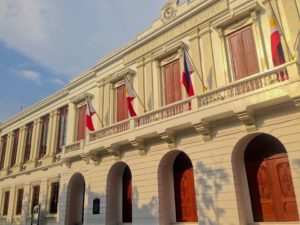The economic team has ordered the establishment of a management system for all of the national government’s nonfinancial assets not just to insure them but also to facilitate their efficient use.
Finance Secretary Carlos Dominguez III, Budget Secretary Wendel Avisado and Acting Socioeconomic Planning Secretary Karl Kendrick Chua on Sept. 24 issued Joint Memorandum Circular No. 2020-1 to implement a Philippine government asset management policy.
The economic managers took note of a 2018 study conducted by PricewaterhouseCoopers on behalf of the World Bank and the Philippine government that revealed there was no single agency in charge of asset management and registry and no available information technology-based centralized asset inventories in many agencies.
The same study showed there was “lack of policies on asset management, insurance, and disaster risk management; limited institutional accountability for asset management; and discrepancy on data maintained by the property units vis-à-vis the books of accounts of certain agencies.”
To resolve the issue, a technical working group on asset management was formed under the Development Budget Coordination Committee to institute and operationalize the Philippine government asset management policy for all nonfinancial assets, such as lands, buildings and infrastructures (such as roads, bridges, flood control and water systems), among other critical assets as determined by agencies.
The policy was aimed at “increasing the efficiency, improving decision-making, managing risks better, and reducing costs in government,” the circular said.
The responsibility to take care of assets “rests directly with the chief or head of the government agency concerned” through two-year agency asset management plans that they would need to put in place, the economic team said.
—BEN O. DE VERA


